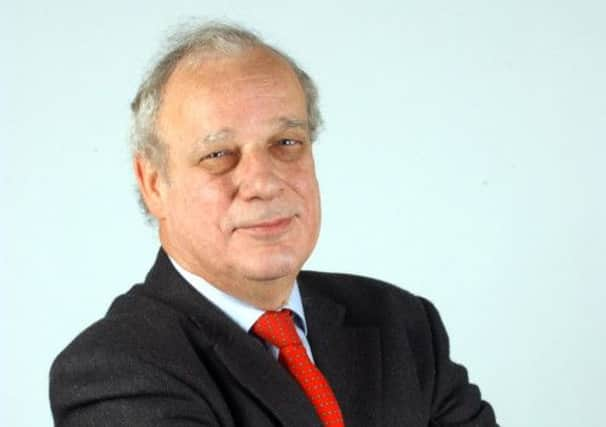Comment: Defence from under–fire PAT


It is remarkable when the managers choose to air them publicly, and even more remarkable when they were aired by one of the best-performing trusts of recent years: Edinburgh-based Personal Assets Trust (PAT).
Investors have expressed their ire in letters to the management and at the annual meeting. Now the criticism has been addressed head-on by director Robin Angus in the trust’s quarterly report.
Advertisement
Hide AdAdvertisement
Hide AdWhat has gone wrong? PAT, with its ultra-defensive portfolio weighted towards gold and United States treasury holdings, has had a most successful run. When Ian Rushbrook and the board took direct responsibility for the portfolio in 1990, the share price – adjusting for a share consolidation in 1993 – was 3,500p and assets stood at £7.3 million. Today the share price is 34,000p and assets are £590m. Net asset value has grown at a compound annual rate of 8.3 per cent, compared with 5.3 per cent for the FTSE all share index.
It enjoyed a particularly successful run in the wake of the global banking crisis, stock market sell-off and recession. As capital preservation became the investor preference, PAT’s deeply conservative stance brought it near-cult status.
But, over the past year, as stock markets rallied, PAT went into reverse. Trusts in the global growth sector have risen over the past 12 months by more than 20 per cent. But shares in PAT have fallen by 1.3 per cent. And, over a three-year horizon, it has trailed the sector by 15 per cent.
The trust has been hit by a strong recovery in equity markets where the trust was underrepresented, and by a sharp fall in the price of gold. Disgruntled investors, having benefited from the low exposure to shares and large investment in gold-related assets, now grumbled that the trust should have read the runes and shifted posture – either by gearing up to hold equities, or investing in FTSE 100 futures.
Angus’s defence is of interest, not only to PAT shareholders but to private investors everywhere. What happens when markets move in the opposite direction to the fund’s investment stance? How long should the managers persist with their investment approach? Should investors hang on in, or sell and move on?
Welcome to the eternal conundrums of stock market investment. PAT is far from being the only trust to experience a reversal of fortune and it is not the only time it has suffered this fate.
In the long stock market rally of 2003-7, PAT was out of favour for its defensive posture and I remember receiving highly critical letters at The Scotsman from disgruntled investors. But the stance of Rushbrook, long a critic of the explosive growth in derivatives, was to prove spectacularly correct after his death when the bubble burst in 2008.
The defence of Angus is that PAT “would stick to our guns and refuse to be deflected from pursuing our long-term strategy by short-term underperformance … As a matter of principle, we don’t invest in what we believe to be seriously over-priced assets which carry a risk of serious and perhaps permanent capital loss”.
Advertisement
Hide AdAdvertisement
Hide AdConsistency over the long term is what matters. And PAT’s directors have backed this view with substantial shareholdings in the trust, worth £25m. PAT’s long-term outperformance, he went on, bears out his opinion that the trust should not be in the business of investing on a one-year view. Despite the improvement in economic data and business confidence, not only does he reaffirm his belief that to be fully invested in equities today would be too great a risk, but he also declares the trust can find “no compelling reasons to take a positive view on stocks and have been gradually reducing our equity holdings”.
Looking at markets in recent weeks, that caution is not unreasonable: shares have fallen by more than 4 per cent in August as concerns have risen over the US timetable for pulling back or “tapering” on quantitative easing, and apprehension that eurozone problems may resurface soon. Meanwhile, gold has rallied from less than $1,300 an ounce back to more than $1,420.
The portfolio is 46.5 per cent invested in government bonds, 19.5 per cent in US equities, 12.1 per cent in UK equities and 11.2 per cent in gold. So I asked Angus whether PAT was in fact a play on bonds rather than gold or equities?
“If it’s a play on anything,” he replied, “it’s on the experience, skill and commitment of a few canny and like-minded people who’ve managed to make a bit of money and are determined, first, to hold on to it and, secondly, to make it grow – if this is possible without taking undue risk and imperilling our primary objective of capital protection. The gold, the bonds, the equities, the cash and the proportions in which we hold them are all means to that end, not ends in themselves.”
He ended with a quote whose wisdom I endorse: “There are two kinds of investor: those who can’t time the markets and those who don’t know they can’t time the markets.” Spot on.